In today’s fast-paced and ever-evolving business environment, organisations face a multitude of risks that can impact their operations, reputation, and bottom line. From physical security threats such as theft, vandalism, and unauthorised access to broader risks like natural disasters, cyberattacks, and operational failures, the importance of risk and security management has never been greater.
Effective risk and security management not only safeguards your assets but also ensures the continuity of your operations while keeping your employees, customers, and stakeholders safe.
At Smartsec Security Solutions, we specialise in providing comprehensive risk and security management services to businesses across Perth and Australia. Our approach focuses on helping organisations identify potential threats, assess vulnerabilities, and implement tailored strategies to mitigate risks and enhance overall security.
With our independent, unbiased advice, we offer tailored solutions that are designed to meet the specific needs of your organisation.
What is Risk and Security Management?
Risk and security management is the process of identifying, assessing, and addressing potential threats to an organisation’s assets, people, and operations. It involves developing and implementing strategies that minimise the impact of security breaches, natural disasters, or operational failures, ensuring business continuity and resilience.
There are two key components to risk and security management:
- Risk Management: This focuses on identifying potential risks, evaluating their likelihood and impact, and implementing mitigation strategies to reduce their effect on the organisation. Risk management aims to minimise financial losses, operational disruptions, and reputational damage.
- Security Management: This involves designing and implementing security measures to protect physical assets, employees, customers, and information from internal and external threats. Security management covers physical security systems, access control, surveillance, and emergency response procedures.
Together, risk and security management provide a comprehensive framework that allows businesses to proactively address security challenges, reduce vulnerabilities, and ensure long-term operational success.
Why Risk and Security Management is Critical
Every organisation, regardless of its size or industry, faces risks that can significantly impact its operations, reputation, and bottom line. Whether it’s a physical security threat like theft or an operational risk like supply chain disruptions, managing these risks is crucial for business success.
Here’s why risk and security management is critical:
- Protecting Assets and Property: Effective risk and security management helps safeguard valuable assets, including equipment, inventory, intellectual property, and data. By implementing the right security measures, you can reduce the risk of theft, vandalism, and damage.
- Ensuring Employee and Customer Safety: A secure environment is essential for the well-being of your employees and customers. By managing security risks, you can prevent workplace violence, unauthorised access, and accidents, creating a safer workplace.
- Maintaining Business Continuity: Risks such as natural disasters, operational failures, or cyberattacks can disrupt your operations and lead to significant financial losses. Risk management ensures that you have contingency plans in place to keep your business running even in the face of unexpected challenges.
- Compliance with Regulations: Many industries are subject to stringent security and risk management regulations, such as data protection laws and workplace safety standards. Proper risk and security management ensure that your organisation complies with these regulations, avoiding fines or legal challenges.
- Mitigating Financial Losses: Security incidents, whether from theft, cyberattacks, or operational failures, can result in costly financial losses. Effective risk management reduces the likelihood and impact of these incidents, protecting your bottom line.
Key Components of Risk and Security Management
At Smartsec Security Solutions, we take a holistic approach to risk and security management, offering tailored solutions that address your organisation’s specific needs. Here are the key components of an effective risk and security management strategy:
1. Risk Assessment and Threat Analysis
The first step in managing risks is to identify the potential threats your organisation faces. This involves conducting a thorough risk assessment to evaluate both internal and external risks, including:
- Physical Security Risks: These include theft, vandalism, unauthorised access, and workplace violence. Assessing physical security risks helps you identify areas where your business may be vulnerable and implement measures to prevent incidents.
- Operational Risks: Operational risks arise from disruptions to your business processes, such as equipment failures, supply chain disruptions, or natural disasters. Identifying operational risks allows you to develop contingency plans to minimise their impact.
2. Risk Mitigation Strategies
Once risks have been identified, the next step is to develop strategies to mitigate or eliminate them. Our approach to risk mitigation focuses on implementing tailored solutions that address your organisation’s unique challenges. These strategies may include:
- Security System Design and Integration: Implementing physical security systems such as CCTV surveillance, access control, and alarm systems to protect your facility from unauthorised access, theft, and other security threats.
- Access Control Systems: Managing who can enter and exit your facility by implementing electronic access control systems (EACS). These systems use key cards, biometric readers, or PIN codes to ensure that only authorised personnel have access to sensitive areas.
- Emergency Response Plans: Developing emergency response plans to ensure that your organisation can respond effectively to security incidents, natural disasters, or other operational disruptions.
3. Security Policy and Procedure Development
Effective security management is not just about technology—it’s also about people and processes. Our consultants help organisations develop clear security policies and procedures to guide employees on how to respond to security incidents, manage access, and report suspicious activity. Key areas include:
- Access Control Policies: Establishing procedures for managing who can access specific areas within your organisation, including employees, visitors, and contractors.
- Incident Reporting Procedures: Developing processes for reporting and investigating security incidents, ensuring that they are properly documented and addressed.
- Training and Awareness Programs: Providing training for employees to ensure they understand their role in maintaining security, including how to follow protocols, recognise threats, and respond to emergencies.
4. Compliance Audits and Regulatory Support
For businesses operating in highly regulated industries, maintaining compliance with security regulations is essential. Our compliance audits help organisations ensure that their security measures align with relevant regulations, such as:
- Data Protection Regulations: Ensuring compliance with privacy laws, such as the Australian Privacy Act, that govern how sensitive data is stored, accessed, and protected.
- Workplace Safety Standards: Ensuring that your physical security measures comply with workplace safety regulations, protecting employees and visitors from potential hazards.
- Ongoing Support: We provide ongoing support to help businesses maintain compliance as regulations evolve and new security risks emerge.
5. Ongoing Monitoring and Continuous Improvement
Risk and security management is not a one-time process—risks evolve, and security measures need to be regularly reviewed and updated. Our approach includes ongoing monitoring and continuous improvement to ensure that your security systems and policies remain effective. Key services include:
- Regular Security Audits: Conducting periodic audits of your security systems and processes to identify areas for improvement and ensure they are functioning as intended.
- System Maintenance and Updates: Ensuring that your security systems are regularly maintained and updated to prevent technical failures and security breaches.
- Adapting to Emerging Risks: As new threats emerge, we help you update your security measures to address these risks, ensuring that your organisation remains protected.
How We Use ISO 31000-2018 for Risk Management
At Smartsec Security Solutions, we follow the ISO 31000-2018 risk management framework, an internationally recognised standard that provides guidelines for managing risks effectively. The framework focuses on identifying, assessing, and addressing risks in a structured and systematic way.
By applying ISO 31000-2018, we ensure that our approach to risk and security management is aligned with best practices and capable of addressing a wide range of security challenges.
The ISO 31000-2018 framework includes:
- Risk Identification and Analysis: Identifying potential risks and evaluating their likelihood and impact.
- Risk Mitigation and Treatment: Implementing strategies to mitigate or eliminate identified risks.
- Ongoing Monitoring and Review: Continuously monitoring risks and reviewing mitigation strategies to ensure they remain effective over time.
This approach allows us to provide comprehensive, effective solutions that enhance your security posture and protect your organisation from potential threats.
Industries We Serve
At Smartsec Security Solutions, we provide risk and security management services to a wide range of industries, each with its own unique challenges. Our consultants tailor their approach to meet the specific needs of each sector. Here’s who we serve:
1. Retail
Retail businesses face constant threats such as theft, vandalism, and fraud. Our consultants help retailers design security systems that monitor shop floors, entrances, and stockrooms, reducing shrinkage and protecting valuable inventory.
2. Commercial Offices
Office environments need to protect sensitive data, valuable equipment, and employees. Our consultants provide tailored risk assessments, access control systems, and security policies that safeguard both physical and digital assets.
3. Healthcare Facilities
Healthcare providers must protect patient privacy, medical equipment, and staff. We offer risk and security management services that ensure compliance with privacy regulations and provide security for sensitive areas, such as patient wards and pharmacies.
4. Educational Institutions
From primary schools to universities, educational institutions must manage risks related to unauthorised access, workplace violence, and emergency response. We develop security strategies that ensure the safety of students, staff, and property.
5. Warehousing and Logistics
Warehouses and logistics centres store valuable goods, making them prime targets for theft and unauthorised access. Our consultants design security systems that monitor loading docks, storage areas, and inventory to reduce theft and protect valuable assets.
Why Choose Smartsec Security Solutions?
At Smartsec Security Solutions, we offer independent, unbiased advice on risk and security management. Since we don’t sell or install security products, our recommendations are based solely on what’s best for your organisation. Our goal is to help you build a secure, resilient organisation that is protected from potential risks and prepared for future challenges.
Feel Free to Reach Out
If you’re looking to improve your approach to risk and security management, reach out to Smartsec Security Solutions today. Our expert consultants are here to assess your risks, develop tailored security strategies, and provide ongoing support to protect your business. Learn more about our services and how we can assist you by visiting our Services page. Let us help you build a secure, resilient future for your organisation.



